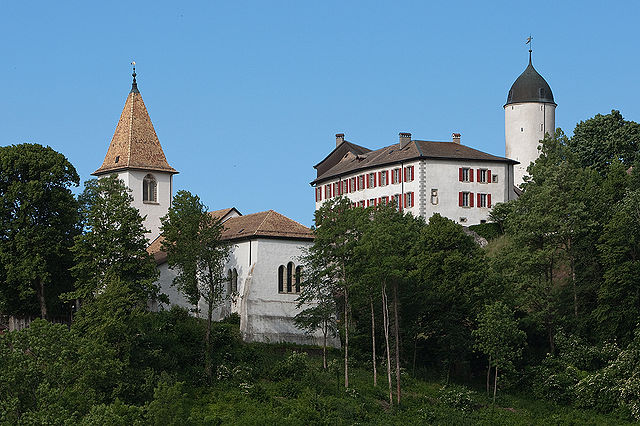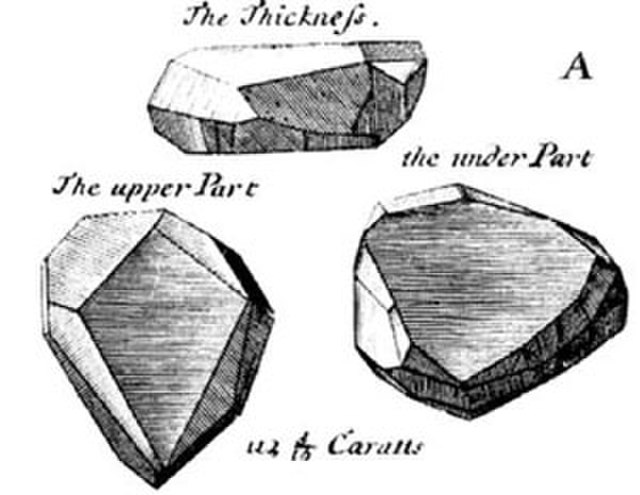The Florentine Diamond is a lost diamond of Indian origin. It is light yellow in colour with very slight green overtones. It is cut in the form of an irregular nine-sided 126-facet double rose cut, with a weight of 137.27 carats. The stone is also known as the Tuscan, the Tuscany Diamond, the Grand Duke of Tuscany, the Austrian Diamond, Austrian Yellow Diamond, and the Dufner Diamond.
Historical photograph of the diamond as part of an aigrette
Portrait of Mary Magdalene of Austria with her son, wearing the Florentine on her head as a pendant
Historic rhinestone copy of the Florentine made in 1865, Natural History Museum, Vienna
Copy of the Florentine, set in a piece as it originally appeared in the 16th-17th century
Jean-Baptiste Tavernier (1605–1689) was a 17th-century French gem merchant and traveler. Tavernier, a private individual and merchant traveling at his own expense, covered, by his own account, 60,000 leagues in making six voyages to Persia and India between the years 1630 and 1668. In 1675, Tavernier, at the behest of his patron Louis XIV, published Les Six Voyages de Jean-Baptiste Tavernier.
Jean-Baptiste Tavernier in oriental costume, 1679
An illustration of Tavernier's of Indians performing Yoga under a Banyan tree
Church and castle with its minaret-style tower, built in 1680 for Tavernier, at Aubonne, Switzerland
Tavernier's original sketch of the Tavernier Blue diamond








